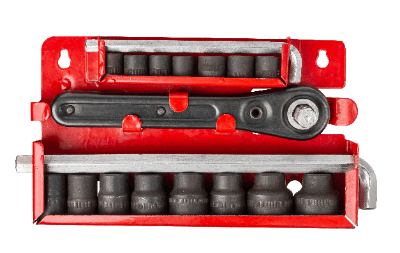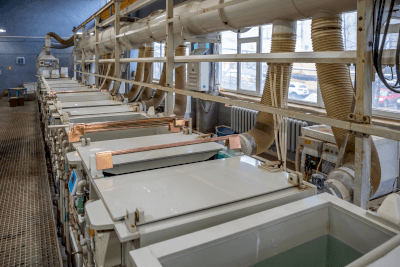監修:株式会社三光堂
極低温輸送とは
極低温輸送とは、医療・生命科学分野における試料・検体・医薬品などを極低温で輸送するサービスです。
極低温輸送では、ドライアイス (昇華温度-78℃) よりも温度が低い液体窒素 (沸点-196℃) を用い、一般的にはサンプルを-150℃以下に保ったまま輸送を行います。ワクチンや幹細胞などの医薬品や、研究上の各種生物サンプルなど、品質維持のために厳密な低温管理が必要な凍結サンプルの輸送に最適な輸送方法です。
極低温輸送の使用用途
極低温輸送は、医療やライフサイエンス分野など、品質管理が重要な生物サンプルを扱う輸送シーンで特に使用されます。
1. 医療 (治療)
医療における用途では、下記のような物質の輸送が例として挙げられます。
- ワクチン
- 幹細胞やCAR-T細胞など、免疫療法・再生医療に用いられる細胞
- 抗体医薬などのバイオ医薬品
- 尿検体
- 血液検体
これらは、医療機関と検査機関の間の輸送、転院などに伴う医療機関同士での輸送が行われています。
2. 生殖補助医療
生殖補助医療の分野において、転院や転居、海外での生殖補助医療など様々な事情から、採取した卵子・精子や受精卵の輸送が必要になる場合があります。極低温輸送は体外受精におけるこれらの凍結細胞の輸送にも用いられている技術です。具体的な輸送品としては、
- 凍結胚
- 卵子
- 精子
- 受精卵
などが挙げられます。
3. 試験・研究
ライフサイエンス分野においては、様々な生物由来試料が用いられ、時として研究機関同士などで輸送が必要となることがあります。これらの物質は、細胞組織や生物学的機能を損なわないように極低温にて取り扱う事が必要です。具体的なサンプルの例としては下記のようなものがあります。
- 培養細胞 (iPS細胞、幹細胞を含む)
- 動物サンプル
- 動物由来の受精卵
- 核酸 (DNA・RNA) サンプル
- 血液・膜サンプル
- 臨床研究サンプル一般 (治験サンプルなど)
4. その他
生物由来物質は、上記以外の分野でも用いられており、代表的な分野が動物飼育のための用途です。そのため、極低温輸送のその他の使用用途としては、家畜・飼育動物の繁殖・健康維持のため、牛などの精子、鶏用ワクチンなどが挙げられます。
極低温輸送の原理
1. 概要
極低温輸送では-150℃以下の温度帯で試料を安定輸送するため、ドライシッパーと呼ばれる専用の容器を用います。また、温度記録装置や温度ロガーを用いて温度のモニタリング・記録が行われる場合も多く、厳密な温度管理が行われています。
2. ドライシッパー
ドライシッパーは、液体窒素を容器内のスポンジに吸収させる仕組みになっており、スポンジからゆっくりと液体窒素が放出されます。この機構により、容器内を-196度位の極低温状態に長時間保つことが可能です。
ドライシッパーの種類にもよりますが、最大で2週間から20日間前後一定の極低温を保つことができるため、細胞品質の維持に最適な保管環境を作り出すことができます。転倒した際の窒素漏れにも対応できるよう、液体窒素を吸収できる液体窒素吸着剤も内蔵されています。
3. コールドチェーン輸送とハンドキャリー輸送
極低温輸送の輸送システムとしては、コールドチェーン輸送とハンドキャリー輸送とがあります。コールドチェーン輸送とは、物流システムにおける低温輸送の体系システムであり、トラックや飛行機など、低温輸送に対応した物流輸送網を用います。
ハンドキャリー輸送とは、専門のスタッフが集荷から最終目的地まで、ドライシッパーを手荷物で運搬する輸送形態のことです。特に、凍結胚の移送などの場合にこちらの形態が用いられます。
例えば、凍結胚の移送に際しては、国外での生殖補助医療などのため航空輸送が用いられることが多いですが、空港でX線検査を通してしまうと検体に損傷が起きる懸念があります。このような空港での検疫対応や、交通事情に合わせた臨機応変な対応など、ハンドキャリー輸送ではより細かい対応を確実に行うことができるというメリットがあります。
極低温輸送の選び方
極低温輸送には、国内輸送や国際輸送があり、輸送距離に合わせて適切なものを選択することが必要です。
極低温輸送に必要なドライシッパーは、購入もしくはレンタルで用意することができます。ドライシッパーの性能はメーカーや製品によって異なるため、輸送する生体試料や用途に応じて、適切なものを選ぶことが必要です。容器のサイズも複数あるため、輸送する生体物質の数に応じて選択する必要があります。レンタルサービスでは、一般的に下記が一式セットになって提供されています。
- ドライシッパー本体や容器ケースなどの梱包一式
- 液化窒素充填
- 使用方法のサポート
- お客様、または移送元までの配送費用
また、-150℃以下の極低温輸送サービスを提供している企業は、2~8℃、15℃~25℃、-20℃、-80℃の温度帯での輸送にも対応可能であることが多いです。これらの温度帯は凍結しないままの生体サンプルなどの輸送に適しており、様々な生体サンプルの輸送を一括で依頼することができます。
本記事は株式会社三光堂様に監修を頂きました。
株式会社三光堂の会社概要はこちら



